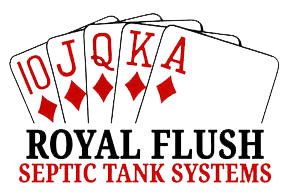An Aerobic septic system has become an essential asset to a significant population of homeowners. Although we’ve addressed the relevancy of pre-treatment systems in the past, there is still much to be done to help you get to know your septic system better.
That is precisely the motivation behind writing this blog post. Today, we are going to show you more about the structure of your septic system, starting by explaining the main difference between the two types of pre-treatment systems available in the market.
All you’ve heard from us until now is that a septic system is a compound of smaller systems that work together to provide specific treatment. We might have even broken down the septic system into smaller parts to better illustrate each of the stages of treatment and their functioning.
From primary treatment, secondary treatment, land application, and transportation systems, you have all the tiny pieces in your hands to assemble a general picture of how all these fit together.
After our previous discussions, it is evident that you are ready for more details. Starting by the very beginning, let’s discuss the types of pre-treatment systems available in the market today and explain the benefits they imply in each case.
As usual, you will have the interactive reference list guide you throughout the blog post.
- What is the difference between aerobic and anaerobic systems?
- Technical Differences
- Installation Differences
- What do ATU’s offer that septic tanks don’t?
- The type of pre-treatment system you should stick to
As we said earlier, a pre-treatment system is indispensable for a variety of reasons, one of them being their capacity to filter out the non-organic matter and break down solids. All of which is possible due to the bacteria withheld inside of the tank.
Why is that relevant? because that means that your septic system is alive just as the bacteria inside it are. That’s right, your septic system is buried in the ground alive and it is kept alive, but how?
The answer is that there are microbes that can thrive in such conditions and others that can’t. That is the difference between the types of pre-treatment available.
On one hand, we got microorganisms that can survive without any presence of oxygen, which is found in a conventional or anaerobic system, and then, those that require oxygen to thrive which are the ones that we can find in an aerobic system.
As you can see, although pre-treatment systems work under the same principles, these two types of bacteria are the main reason why one system is different from another.
To decide which system is better, we will now proceed to review these two systems in more detail and add more context to this new information that we are bringing in.
What is the difference between an aerobic septic system and an anaerobic one?
The difference between both systems is that bacterial activity is incentivized by the presence of oxygen, which does not only accelerates the bacterial process, but it also allows aerobic bacteria to thrive in the system. aerobic treatment units.
That leads to a more diverse and better motivated bacterial population ready to break down the particles that we want to remove from the effluent, which ultimately translates into increased performance.
To better appreciate the difference between these two systems and expose the benefits that they suppose, we think that breaking those differences into two categories, will help you spot what is it that you are getting from the pre-treatment system you want to stick with.
Technical Differences
In detail, an aerobic pre-treatment system is far more complex than it’s conventional predecessor, which is good in this case.
A conventional pre-treatment system normally has two compartments of chambers, whereas an aerobic system has four. That means, that an aerobic system offers a more refined treatment from the beginning.
Also, an aerobic system provides the possibility to disinfect the wastewater and remove any colors and odors before it is transferred to the land application system.
A conventional system works at a much slower pace and it does not always come with a device designed to monitor the performance of the system, which can result in catastrophic land damages.
That means that an Aerobic system provides a more rigorous treatment and safer working conditions if compared with the conventional alternative. And that isn’t all, wait until you hear about the implications that it has on the installation process.
Installation Differences
Additionally to the differences that we’ve discussed, a conventional system demands very restrictive conditions, otherwise, it is not suitable. That is another reason why aerobic systems are being pushed farther upfront.
A conventional system requires many characteristics that often escape the possibilities of the owner. Not only do they require a much bigger working area, but also a deeper soil, a certain layer composition, and in some cases, steady weather conditions.
This does not necessarily mean that a conventional system is underperforming compared to an aerobic one, it just proves that an aerobic system can do the job better and with fewer complications, which translate into time and money savings.
That said, you might be looking forward to hearing more about what advanced treatment units have to offer, and better yet, why set’s it apart from its predecessor.
What does an Aerobic Septic System offer that conventional tanks don’t?
Because Aerobic treatment units provide a treatment very similar to those of the municipal sewer system, it is possible to pair with other applications like landscape design and irrigation.
The type of pre-treatment system you should stick to
The answer to this question might become more apparent after discussing the characteristics of the fluid desired to be managed and treated with such systems.
Soil evaluations are important because it helps the septic professional determine whether a conventional system is a fit. If the clay content is high, the field gets saturated very quickly and for that reason using an aerobic system looks like the optimal choice.

